The organic farming policy in Andhra Pradesh aims to enhance yields and prices by promoting organic fertilizers. In agriculture, it is used to control pests that are derived from organic fertilizers and animal waste. Using chemical pesticides and artificial fertilizers, farming began responding to environmental disasters.
It uses organic inputs such as green manure and cow dung. Irradiation, sewage sludge, herbicides, genetically modified organisms, and synthetic fertilizers are prohibited in organic farming. The Andhra Pradesh government has set up a committee to formulate the state’s organic farming policy. The program aims to promote organic farming in the state.
Agro-environmental protection and biodiversity are the primary objectives of the state’s decision to increase organic farming. Based on its basic principles, it eliminates chemical inputs and uses locally available resources to reduce farmers’ reliance on inputs purchased from the market that could put them in debt. Natural farming methods have not been fully studied, but preliminary evidence indicates that they increase income through higher yields and lower production costs.
Andhra Pradesh organic farming
Major crops in Andhra Pradesh
As Andhra Pradesh’s economic backbone, agriculture plays a critical role. Most of the state’s citizens are cultivators who cultivate the lands of their forefathers for a living. The government of AP has established a separate “Department of Agriculture” to assist the state’s farmers in increasing agricultural production.
The department enhances agricultural productivity by providing farmers with modern technical knowledge. Andhra Pradesh is blessed with suitable weather to produce varieties of crops. Therefore, the farmers of Andhra Pradesh practice multiple cropping patterns to increase agricultural production growth. In the year 2020-2021, the following crops will be grown in abundance in the state:
- Rice: Andhra Pradesh produced 12458 tonnes of rice
- Wheat: The state had cultivated 8000 tonnes of wheat
- Jowar: The state had produced 619 (in thousand) tonnes of Jowar
- Bajra: Andhra Pradesh had grown 149 (in thousand) tonnes of Bajra
- Maize: The state had grown 1581 tonnes of Maize
- Minor Millets: Andhra Pradesh had produced 39 (in thousand) tonnes of Minor Millets
- Coarse Grain: The state had grown 2508 tonnes of Coarse Grain
In case you missed it: Drip Fertigation in Flower Crops: A Practical Guide for Floriculture Farmers
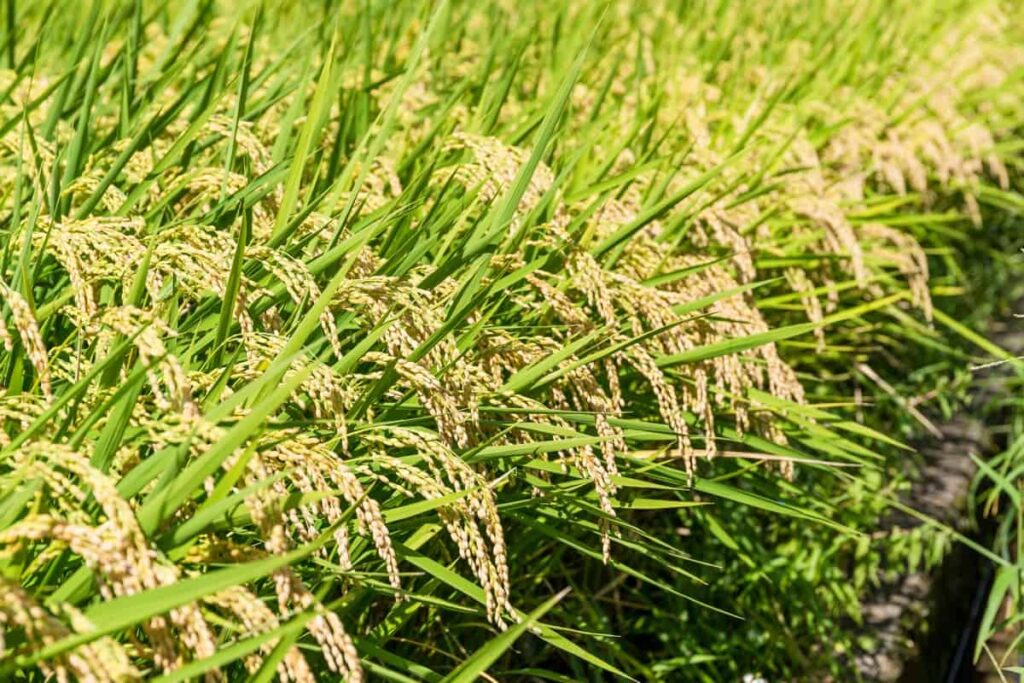
Other important cash crops grown in Andhra Pradesh include Groundnut, Pulses, Castor, Sunflower, Cotton, Oilseeds, and Sugarcane, contributing to the state’s revenue. Thus, the Government of Andhra Pradesh’s Department of Agriculture plays an integral role in improving the quality and production of agricultural products. Additionally, the Department of Agriculture provides farmers with high-yielding seeds, fertilizers, and pesticides and educates them about modern crop production techniques.
Organic vegetable farming in Andhra Pradesh
Organic vegetable growers form farmer’s Producers’ Organizations (FPOs) from Vijayawada and its environs, such as Go Adharita Prakruthi Vyavasaya Paraspara Sahakara Sangham, which sells vegetables and agricultural products. A certificate of organic farming will be issued to trained farmers who sell under the brand name “Amaravati Organic.” This project is designed to reduce agriculture expenditures and increase farmers’ incomes.
A major objective of the project is to increase the use of natural fertilizers such as cow dung in agriculture and eliminate chemical fertilizers and pesticides. Organic farming management focuses on the whole farm system and its interactions with climate, environment, and social and economic conditions rather than considering the farm as comprised of individual enterprises. The key characteristics of Organic farming include,
- Organic matter levels must be maintained, soil biological activity must be maintained, and careful mechanical treatments must be applied to maintain long-term soil fertility.
- In addition to legumes and biological nitrogen fixation, organic materials, such as crop residues and livestock wastes, can be recycled effectively to ensure nitrogen self-sufficiency
- Weed, disease, and pest control rely primarily on crop rotation, natural predators, crop diversity, organic manuring, use of resistant varieties, and limited thermal, biological, and chemical intervention.
- Supplementing crop nutrients, where necessary, using nutrient sources made available to the plants indirectly but the action of soil microorganisms and chemical reactions of the soil.
In case you missed it: Kerala Organic Farming: For Vegetables, Herbs, Fruits, Millets, Crops, Livestock, and Aquaculture
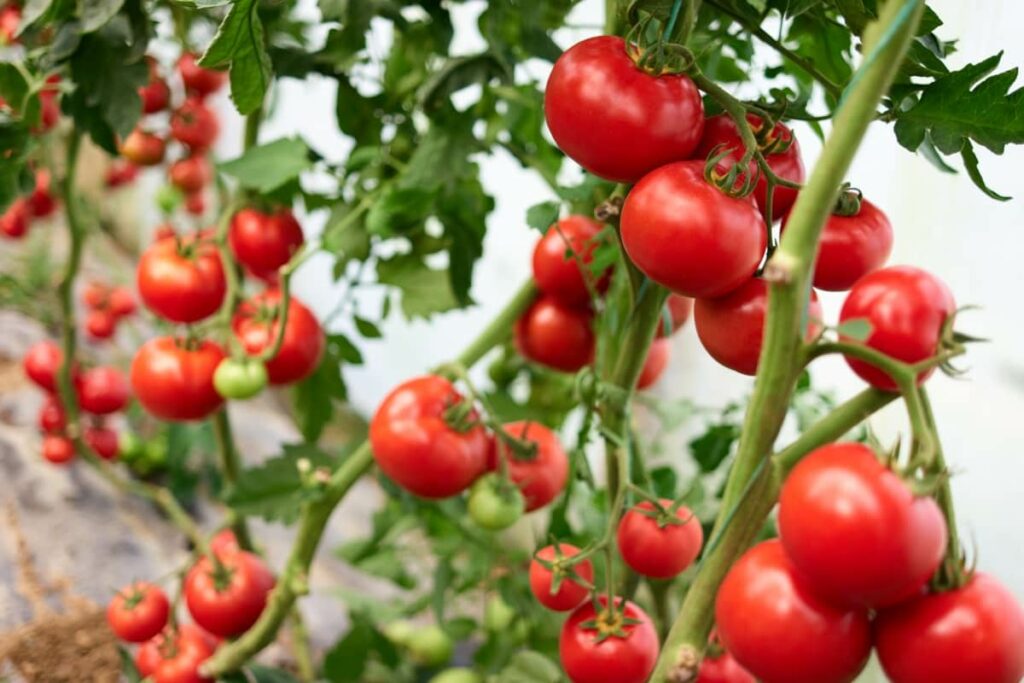
The state also is one of the leading cultivators of vegetables. Vegetable production was 77.71 lakh MT for the year 2019-20. Tomato is one of the state’s important crops, producing 26.67 lakh MT. Anantapur, Kurnool, Chittoor, and Kadapa are the top tomato-cultivating districts in the state. It is also cultivated in Krishna, West Godavari, and other districts. In addition, onion production was 9.8 lakh MT, green chilies 6.32lakh MT, cucumber 8.69 lakh MT, brinjal 4.32 lakh MT and okra output was 3.32 lakh MT.
| Vegetable | Areas growing in Andhra Pradesh | Organic yield per acre | Crop duration |
| Drumsticks | Prathipadu, Tallaveru, Rayavaram, Ramachandrapuram, Palamaneru, Penukonda, Dharmavaram | 5-9 tons | 8-9 months |
| Okra | Kadiri, Alamur, Rampachodavaram, Vinukonda, Vinukonda, Macherla | 5-6 tons | 90-100 days |
| Radish | Kanchikacherla, Mylavaram, Tiruvuru, Vissannapet Kaikalur, Bantumilli, Pamarru, Movva, Bandar. | 15-16 tons | 60-65 days |
| Tomato | Atmakur, Udayagiri, Kovur, Kavali, Indurkurpet, Vakadu, Naidupet, Podalakur, Vinjamur. | 40-45 tons | 140-145 days |
| Cucumber | Parvathipuram, Palakonda, Pathapatnam, Narsannapeta, Tanuku, Narsapur, Bhimadole, Gopalapuram | 6-6.5 tons | 45-50 days |
| Onion | Ongole, Kandukur, Kanigiri, Giddalur, Markapuram, Podili, Darsi, Addanki, Chirala | 12-14 tons | 80-150 days |
| Cabbage | Gopalapuram, Ganapavaram, Penumantra, Poduru, Akiveedu, Addanki, Chirala, Maddipadu, Parchur, Santhamaguluru. | 10-14 tons | 90-120 days |
| Cauliflower | Muddanur, Kodur, Lakkireddipalli, Dhone, Atmakur, Nandikotkur, Allagadda, Banaganapalle, Koilakuntla | 35-50 tons | 60-150 days |
| Brinjal | Amalapuram, Mummidivaram, Razole, Kothapeta, Alamur, Ramachandrapuram, Madanapalle, Punganur, Palamaneru, Kuppam, Bangarupalem | 16-18 tons | 140-150 days |
Organic herbs farming in Andhra Pradesh
In Andhra Pradesh, medicinal and aromatic plants are cultivated in 9464 ha by 4676 farmers. Out of this, 7790 ha is under cultivation of medicinal plants, and more than 4002 farmers are involved in the cultivation of medicinal plants. Long pepper, country arrowroot, Amla, coleus, aloe, and Ashwagandha are some important medicinal crops cultivated successfully by Visakhapatnam, Prakasam, Guntur farmers, Kurnool, and Ananthapur districts.
Long pepper and country arrow roots are cultivated for their roots on a large scale in Visakhapatnam (4822 ha), contributing to about 62% of the total area under cultivation of medicinal plants in Andhra Pradesh. A major part of the total turnover in cultivated medicinal plants in Andhra Pradesh comes from a medicinally important long pepper root known as pipalmodi (mudi or saraku in vernacular).
The estimated trade-in for this root is roughly 8-10 crores annually. The major beneficiaries are the tribal farmers. Other crops which are cultivated on a large scale are Ashwagandha in Kurnool and Anantapur districts. In addition, Amla is being cultivated in almost all the districts, with major areas in Guntur, Prakasam, and Krishna districts.
Long pepper and biennial turmeric are major crops cultivated as a mixed crop in the backyards by the Girijan farmers in Madugula, Munchingput, Paderu, and Hukupeta mandals in the Visakha agency area. The crop is propagated vegetatively, and the root is uprooted after 20-24 months, cut into 2-3″ pieces, and sold in the local market. Then, it is divided into grades and sold to wholesale dealers.
Country arrowroot is another important medicinal crop cultivated for its medicinally important root in Munchingput mandal in the Visakha agency area. A net income of Rs 80,000/ha can be obtained in two years. In Ananthpur and Kurnool districts, Ashwagandha was found to be a suitable rainfed crop alternative to traditional crops. It is propagated by seed; on average, about 500 kg of dry root and 200 kg of seed can be obtained per hectare in six months. As a result, an average net income of 15-18000/ha can be obtained.
Organic fruit farming in Andhra Pradesh
The state of Andhra Pradesh has contributed significantly to India’s traditional cultivation of horticulture crops. Increased production and area under horticultural crops have helped Andhra Pradesh attract private-sector investment. Vegetables and fruits were produced and planted in greater numbers. Exports have the potential to increase Andhra Pradesh’s contribution to the economy.
With a voluntary shift in cropping patterns, Horticulture returns per unit of land are higher than Agriculture. As a result, horticulture provides farmers with a higher income because it is climate-resilient. The state of Andhra Pradesh topped the list among all states. 17.48 lakh hectares of horticulture crops are grown in the state, with an annual production of 301.73 lakh metric tons. In Andhra Pradesh, the horticulture sector contributes approximately 16.07% to the state’s GVA (Gross Value Added).
In case you missed it: How to Fertilize Avocado Trees For Insane Fruit Set: Schedule for Natural, Organic, and Chemical Application
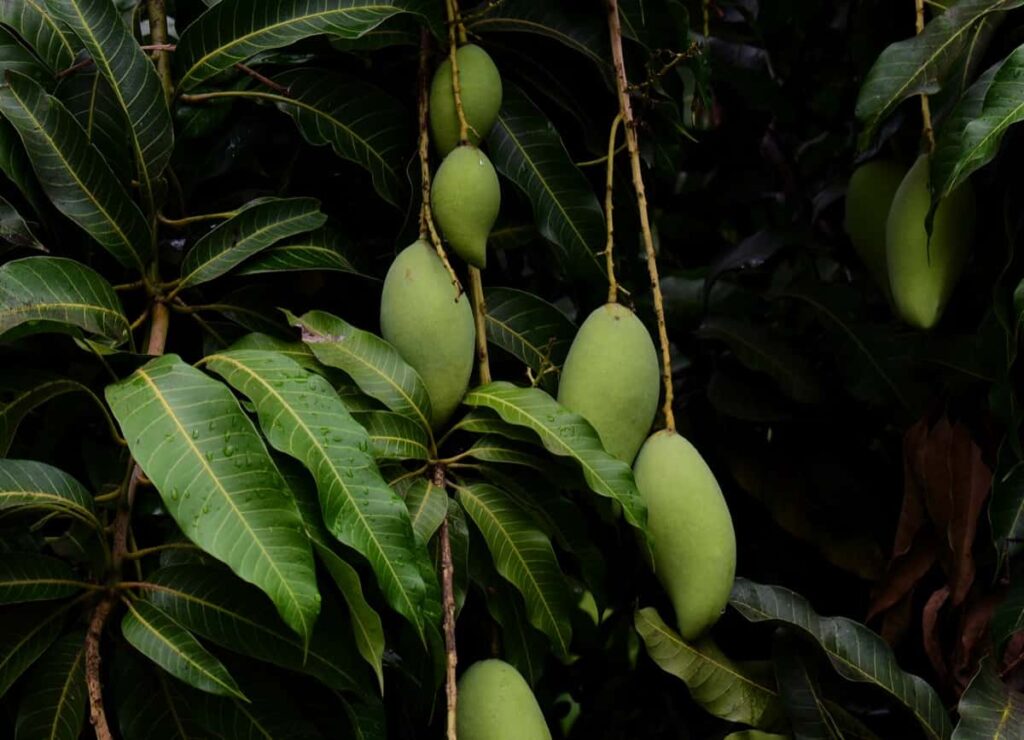
Approximately 1.8 crore tonnes of fruits were produced in 2021-22 in Andhra Pradesh. Around 18 lakh crops are grown in Andhra Pradesh, while about 7.5 lakh hectares are planted with fruit trees. Fruit crops in Andhra Pradesh include mangoes, bananas, papayas, oranges, and Batavia. In recent years, cropping patterns in the state have changed structurally. This has resulted in AP becoming a major horticulture hub because the horticulture sector is growing faster than agriculture.
| Fruit crop | Areas growing in Andhra Pradesh |
| Jack fruit | Srikakulam, Visakhapatnam, East Godavari, Vizianagaram, West Godavari, and Krishna districts. |
| Mango | Krishna, Vijayanagaram, Vishakapatnam, West and East Godavari, Kadapa |
| Papaya | Srikakulam, Vizianagaram, Kadapa, Chittor, Kurnool |
| Banana | Kadapa, Pulivendula, Rajampeta and Railway Kodur, Chittor, Kurnool, Karnapudiki, Narpala |
| Guava | Kaluvoya, Atmakuru, Marripadu, Nuzivid, West Godavari areas. |
Organic millet farming in Andhra Pradesh
Andhra Pradesh’s millets are being planted more and more each year. Experts describe it as a good development, similar to returning to one’s roots. Known as cereal crops or grains, millets are a group of highly variable small-seeded grasses grown worldwide. Under dry, high-temperature conditions, the crop is highly productive and has a short growing season. Many countries around the world grow millet.
Indian and African countries grow pearl millet, the most widely grown millet. Other important crops include finger millet, proso millet, and foxtail millet. In ancient times, millet crops like ragi, Korra, Sama, and Gantelu were staple crops for tribal people to ensure food and nutrition security. Coastal Andhra and parts of Rayalaseema are participating in a comprehensive project that aims to revive millet cultivation by tribals.
In case you missed it: How to Start Organic Kodo Millet Cultivation from Scratch: Production and Cultivation Practices for Sowing to Harvesting
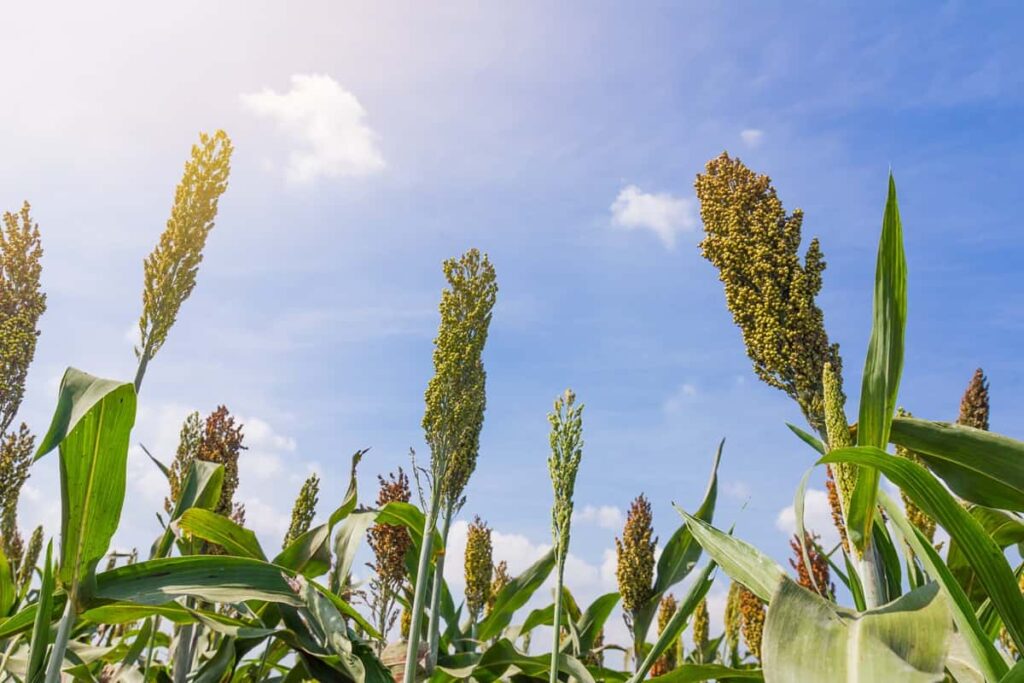
In Andhra Pradesh, special programs have been launched to promote Nutri cereals by keeping millet boards. Providing a long-term message of the benefits of including power-packed millets in the diet is the goal of promoting the millet food tradition across all levels. Agriculture and food consumption must undergo a paradigm shift to stop malnutrition.
In addition to being high in minerals, proteins, fiber, and vitamins, finger millet (ragi), foxtail millet (Korra), and little millet (Sama) can also be used as a substitute for rice and wheat. As of 2016, Andhra Pradesh has 1.77 lakh ha of major millets and 0.45 lakh ha of minor millets. Jowar and Bajra are the major millets. Some minor millets include Ragi, Korra, Andu Korralu, Variga, and Ooda Sama.
Organic livestock farming in Andhra Pradesh
Farmers and landless workers in rural and urban areas rely heavily on animal husbandry for their income. For many people caring for and managing livestock, it creates gainful employment opportunities, including self-employment. Further, milk, eggs, meat, and value-added products are nutritious, protein-rich, and balanced. In addition, they are integrally linked to the region’s social, cultural, and traditional values.
A major function of the Animal Husbandry Department is to provide veterinary health care for livestock and poultry reared in the state and to improve their genetic production potential. In addition, various beneficiary-specific schemes are also being provided for the economic upliftment of the poor, downtrodden, and weaker sections of society. Several veterinary institutions provide these services throughout the state.
As a result of the dedicated and sustained efforts of the department, the livestock sector of the AP has been elevated to a prominent position with beneficiary-oriented programs and eco-balanced natural resource utilization. The state is comparatively rich in livestock, and poultry wealth with 0.39 million crossbred cattle, 12 million non-descript cattle, and 3.9 million buffaloes in milk, producing around 7.7 million tonnes of milk annually major share of milk.
In case you missed it: Farming Business Plan PDF: for Poultry, Livestock, Agriculture, Horticulture, Greenhouse, and Hydroponic
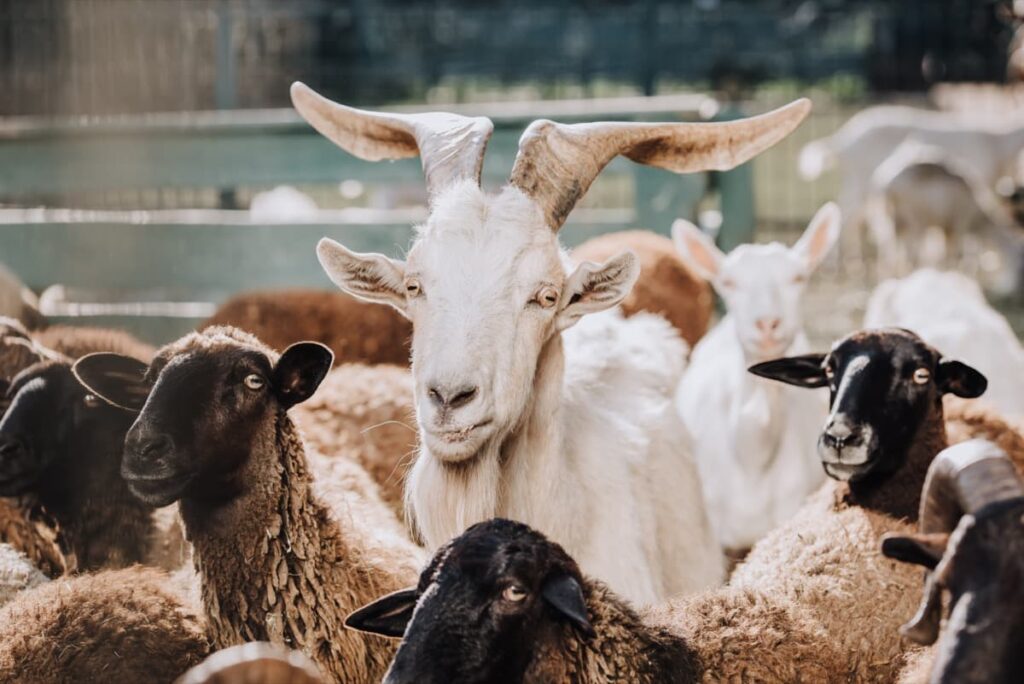
The state ranks first in the country for poultry, with 16.5 billion egg production per annum. The meat production in the state is 0.45 million tonnes annually. Although the state has utilized the potentiality to a large extent, it has further scope to enhance the productivity of cattle, buffalo, sheep, and poultry with the adoption of the following technologies;
- Improved germplasm of Murrah buffalo and Frieswal cattle for a 5 % increase in milk production
- Cystoscope assisted Artificial Insemination to increase conception rate by 20%
- Field-based vaccines (mouth and foot disease, bluetongue) and diagnostic kits (infectious bovine rhinotracheitis, bovine viral diarrhea) for enhanced income and production
- Complete feed blocks and area-specific mineral (Ca, Cu, P, and Mn) supplementation for 10 to 15% improvement in productivity • Hormonal modulation of poultry in organized farms for around 5% rise in egg production
Organic aquaculture farming in Andhra Pradesh
Fisheries have become an essential part of the state’s food production in recent years, providing livelihoods and food security to many. As a result of the transformation of fishing from a traditional livelihood activity to a commercial enterprise, it has become an important means of livelihood, nutrition, employment in rural areas, and foreign exchange earner for state and national economies.
A leading state in India, Andhra Pradesh has consistently grown its fish production and made the most of its resources. Several innovative welfare and development programs have also been implemented in Andhra Pradesh. There are abundant natural resources in Andhra Pradesh, which makes it a desirable place to farm coastal aquaculture. As the natural gateway to eastern and southeast Asia, Andhra Pradesh is strategically located on the southeast coast of India.
A population of 4.95 crores lives in the state. There are fertile river basins, conducive agro-climatic conditions, and an extensive canal system promoting fisheries in Andhra Pradesh. To achieve the social-economic development of the new State of Andhra Pradesh, the Government of Andhra Pradesh sees the Fisheries sector as a Growth Engine.
In case you missed it: Common Shrimp/Prawn Diseases, Symptoms, Treatment: Check How this Guide Helps Shrimp Farmers
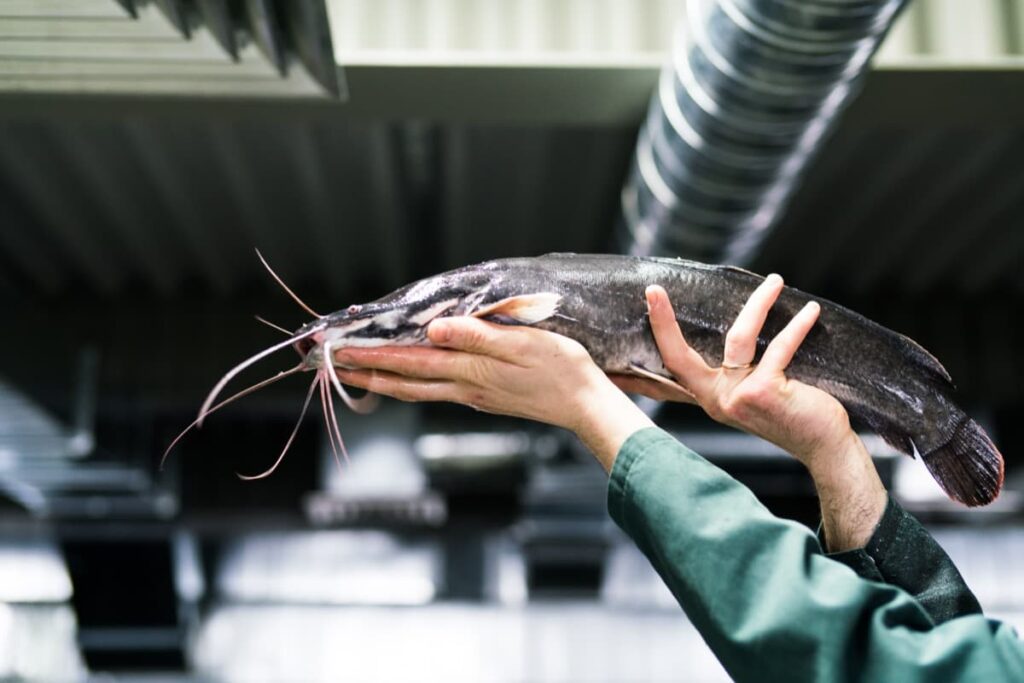
Shrimp farming in Andhra Pradesh has become a significant commercial activity since introducing a Specific Pathogen Free (SPF) Shrimp, Litopenaeus vannamei. A total of 1,859 shrimp farms and 63 hatcheries are registered with the Coastal Aquaculture Authority (CAA). As a result, Andhra Pradesh has a great deal of potential for land-based coastal aquaculture.
- Shrimp and scampi farming (2.0 tonnes/ha/year; 1.5 tonnes/ha/year)
- Setting up aqua-feed production units and disease diagnostic centers Culture-based fisheries/pen and cage culture in reservoirs (150 kg/ha/year)
- Diversification of excess trawling for tuna fishing (35,000 tonnes annually)
Farmers are practicing three types of aquaculture: freshwater aqua farming (inland fish and prawn), brackish water (a mix of salt and freshwater-not as salty as seawater), shrimp, marine fish, and marine shrimp. Inland, brackish and marine aqua are cultivated on 51,440 acres in 11 mandals of the Machilipatnam division.
Machilipatnam, Bantumilli, Nagayalanka, Kruthivennu, Koduru, Pedana, Guduru, Mopidevi, Challapalli, Avanigadda, and Ghantasala mandal farmers are involved in these three types of aquaculture. In addition, over 11,838 farmers of this division have been cultivating L Vannamei shrimp and other sea-based fishes.
How to get Organic Certification in Andhra Pradesh
Certification is important for any organic product to convey its genuineness. It allows people to purchase the product knowing whether it is organic. Certification has become paramount in the wake of several firms promoting and claiming their products as organic, but there is no certification to ascertain their claims. When people are ready to spend more money to get a genuine organic product, they need to get genuine products. In this regard, certification is a must
The establishment of the Andhra Pradesh State Organic Products Certification Authority Wing in the state is another step towards encouraging organic cultivation and providing a stable market for organic farmers. In the absence of government organic certification agencies in the state, groups of farmers cultivating organic crops, those involved in processing organic products, traders, and customers were facing hardships.
In case you missed it: Beekeeping Business Plan: Bee Farming Cost, Profit, and Project Report in India

- Farmers who wish to obtain a certificate for organic farming must meet the standards of the National Program for Organic Production (NPOP).
- It is required that applicants submit their applications under the NPOP’s requirements.
- Operators (persons responsible for the unit being certified) can obtain APSOPCA certification by contacting the APSOPCA office. APSOPCA sends a detailed application package, including the application form and procedure for APSOPCA certification, upon receiving a money order, DD, or cash payment of Rs.75/-. Then, APSOPCA requires operators to submit their certification applications.
- APSOPCA sends an offer for inspection and certification along with the fee scale after receiving the completed application form. The operator must pay 75 % of the offer fees as an advance in the form of a DD payable to APSOPCA in Alwaye upon accepting the offer.
- In consultation with the operator, APSOPCA schedules the inspection after receiving the advance payment. The operator must sign a contract for inspection and certification before the inspection can take place.
- While conducting the inspection, a member of the APSOPCA team will follow the principles outlined for the inspector. In addition, inspectors and operators must cooperate according to the inspection and certification contract.
- The inspector completes the inspection report during the inspection visit. A copy of it is given to the operator after they acknowledge it with their signature. The operator is also provided copies of relevant standards and sanctions during the inspection.
- For the certification process, the original inspection report will be sent to APSOPCA.
- A cost invoice is sent to the operator after the inspection and certification. The operator is responsible for paying the remaining amount of the final invoice to APSOPCA.
- A copy of the inspection report will be submitted to the certification committee as soon as the assessor receives the full payment.
- If additional documents are required, a communication will be sent to the operator.
- Documentation will be considered by the certification committee when making a certification decision.
Conclusion
Across Andhra Pradesh’s agro-climatic zones, various soil types and climatic conditions exist. Andhra Pradesh has coastal plains, Western Ghats, and plateaus, enabling it to grow various crops. The state is known for its excellence in horticulture and animal husbandry. Additionally, many state farmers practice organic agriculture and have developed various cultivation systems using indigenous knowledge. In addition, organic wastes and holistic pest control agents have been developed to control pests and diseases.
- Profitable Village Farming Business Ideas in 2024
- High-Yield Aquaculture: Fast-Growing Fish for Farming
- Effective Fish Pond Construction Techniques for Beginners
- Irrigation and Water Management in Pineapple Farming
- Blossom to Harvest: Mastering Flowering and Pollination in Papaya Farming
- Pig Fattening Essentials: From Selection to Sale for Beginners
- Raising Wagyu Cattle: A Complete Guide for Premium Beef Production
- Soil Types and Their Water Holding Capacity
- Optimizing Irrigation Schedules for Coconut Groves for Enhanced Yield
- Espresso Your Garden: Coffee Grounds for Healthier Acid-Loving Plants
- The Best Soil Mix for Snake Plants: How to Mix Your Own Snake Plant Soil
- Green Thumb Success: Expert Tips for Cultivating Greenhouse Beans All Year Round
- Bloom All Year Round: The Ultimate Guide to Indoor Hyacinth Care
- Eco-Friendly Gardening: How to Make Liquid Fertilizer from Kitchen Waste
- Ultimate Guide to Grow Anise in Pots: Explore Seed Propagation to Harvesting
- Guide to Raising Chester White Pigs: Discover Breed Facts to Growth Management
- Mastering the Elegance: The Ultimate Guide to Weeping Cherry Tree Care, Planting, and Maintenance
- Ultimate Guide to Planting Garlic in Grow Bags: Growing Strategies for Beginners
- How to Fix Spider Plant Leaf-Related Problems: Natural and Organic Remedies
- 10 Reasons Why Your Tulsi Plant is Shedding Leaves: Home Remedies and Solutions
- Optimizing Growth and Yield: The Advantages of Palm Bunch Ash Fertilizer
- Utilizing Neem Oil Extract as a Natural Pesticide for Hydrangea
- From Soil to Harvest: Various Ways in Which Farmers Can Use AI Tools
- Steps to Encourage and Induce Citrus Flowers: A Comprehensive Guide
- How to Fix Snake Plant Leaf-Related Issues: Natural and Organic Remedies
- Transform Your Garden into a Fragrant Oasis with Raat Ki Rani (Night Blooming Jasmine)
- Discover the Ideal Chicken Breeds for Philippine Farms
- How to Create a Poultry Egg Farm Business Plan for Profits
- Grow Lemon Cucumbers Like a Pro: Insider Techniques for Bountiful Yields
- Ultimate Guide to Caring for Your Pink Princess Philodendron: Tips for Thriving Variegation
- Areca Nut Profit Per Acre: Calculating Yield and Cost of Cultivation
- How Kaveri Chicken is Becoming a More Profitable Breed in Indian Backyards
- Transform Your Barn: 9 Steps to Convert a Horse Stall into a Chicken Coop
- Exploring Suffolk Sheep Disadvantages with Limitations and Challenges
- Guide to Solving Potted Lemon Tree Problems: How to Revive Lemon Tree in Containers
- Steps to Encourage Female Pumpkin Flowers: Best Strategies for More Flowers and High Yields
